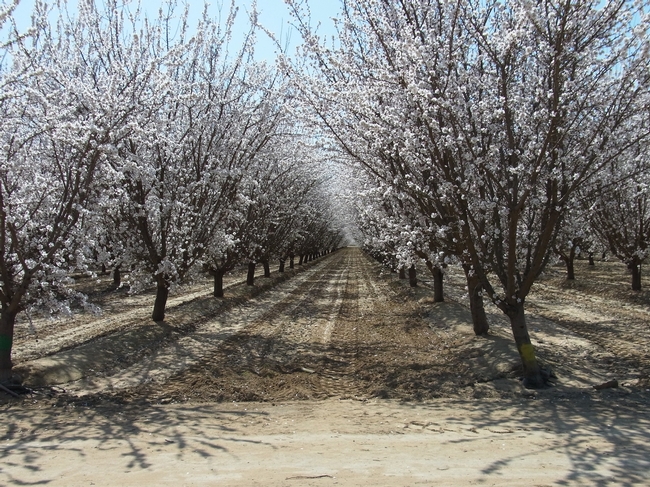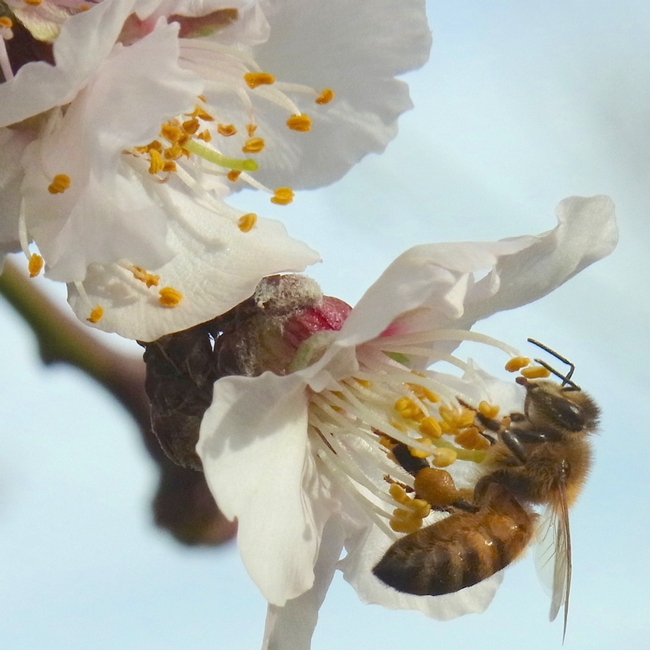

Bees obtain both pollen and nectar from almond flowers. Almond pollen is high in protein and provides healthy forage for bees. A solitary bee, Osmia lignaria, is active at the same time as almond bloom and is more likely than honey bees to fly in the cool, wet weather that can occur then. Although they are raised commercially for crop pollination, as solitary bees we currently have no way to produce them in the same quantity as honey bees. Osmia is a great option for home orchards; provide early-blooming plants and a solitary bee house to encourage them.
Honey bee hives are often left in orchards for a month or more before and after almond bloom. While many almond growers are recognizing the importance of providing alternative bee forage, if you live within flight distance of an orchard – 3 to 5 miles – your garden can also help.
California's almond crop was worth $6 billion in 2015; our state produces 82% of the world's supply of this specialty crop. Almonds are eaten whole, added to food, or made into products such as almond milk and almond butter. This nut is high in protein and monounsaturated fat and contains a number of vitamins and minerals. California's almond acreage continues to increase. Your garden can help ensure that there will be healthy bees for pollination of this important specialty crop.